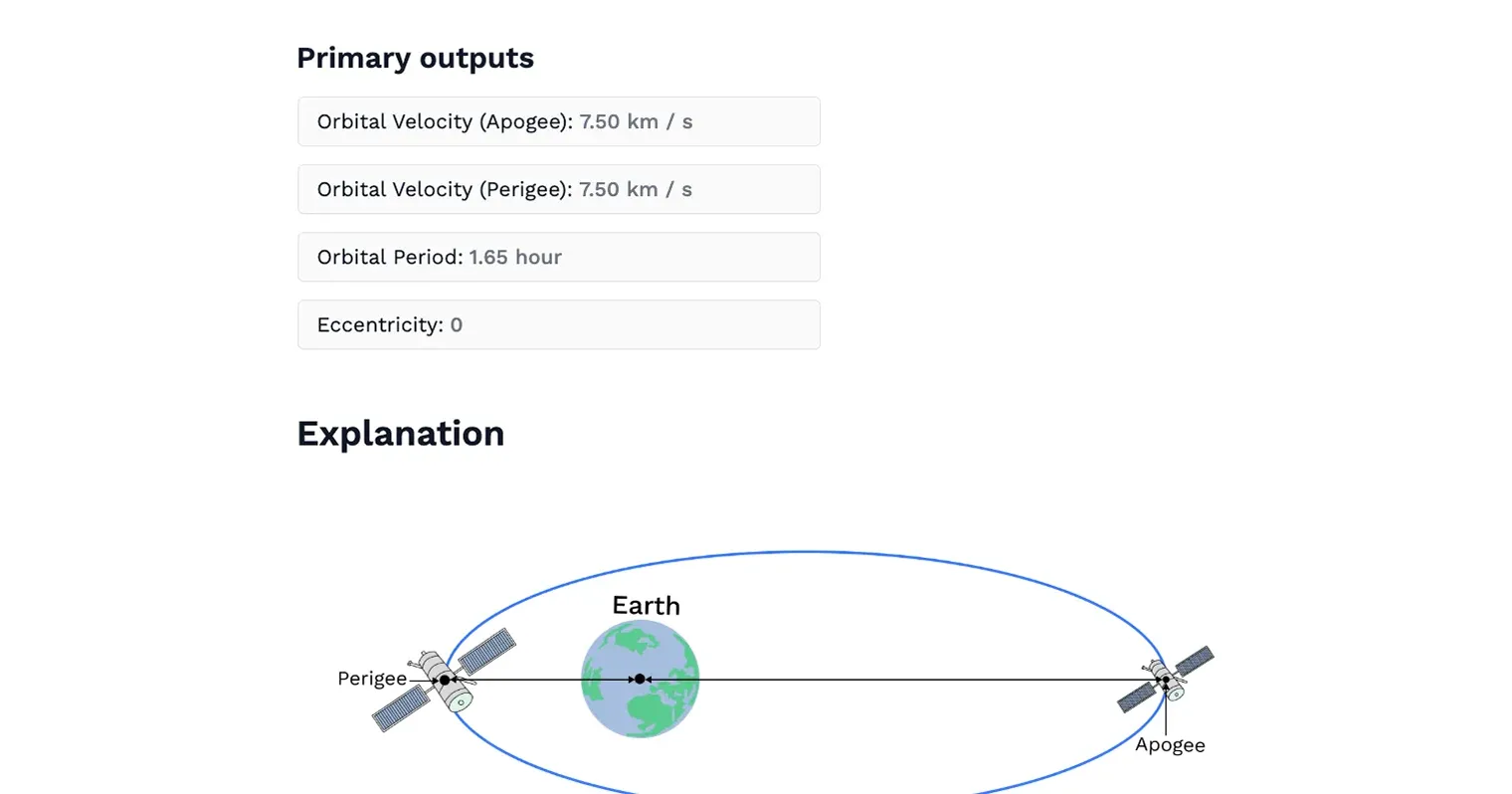Free Orbital Mechanics Calculator: Velocity, Period, and Eccentricity. Step-by-step, engineering-grade tool with downloadable report.

This template is not available yet. You can sign up and create it yourself!
Or let us know if you'd like to be notified when it’s ready:
About this calculator
The Orbital Mechanics Calculator is an essential tool for calculating the orbital velocity and period of a spacecraft in both circular and elliptical orbits around the Earth. These parameters are critical in space mission design and are influenced by the apogee and perigee of the spacecraft's orbit. This tool simplifies complex orbital mechanics to help engineers and researchers efficiently plan missions.
This calculator is for:
- Aerospace Engineers who need precise calculations to design orbits for satellites and other spacecraft.
- Astrophysics Students and Educators exploring the principles of celestial mechanics in real-world applications.
- Mission Planners and Space Enthusiasts looking for quick insights into orbital parameters for various mission scenarios.
The Orbital Mechanics Calculator allows for quick feasibility checks to evaluate how changes in apogee, perigee, or orbit type affect the spacecraft's velocity and orbital period. While software like MATLAB or STK can provide advanced simulation capabilities, this tool offers a streamlined approach for initial design and analysis.
For further reading and in-depth understanding, refer to:
- Fundamentals of Astrodynamics by Bate, Mueller, and White
- Orbital Mechanics for Engineering Students by Howard D. Curtis
These books provide foundational knowledge and practical examples of orbital mechanics in spacecraft design.
Engineering templates
Common calculators
Design guides
FAQs
How does the apogee and perigee affect orbital velocity and period?
The apogee (farthest point) and perigee (closest point) determine the spacecraft's speed and orbital duration, with elliptical orbits having varying velocities at different points.
How can orbital period be useful for mission planning?
The orbital period helps determine how long it takes for a spacecraft to complete one orbit, which is essential for timing communication, Earth observations, or docking maneuvers.
What alternative tools can be used for orbital mechanics calculations?
Software like GMAT, STK, or Python libraries such as Poliastro and PyEphem can provide detailed simulations and additional insights into orbital dynamics. You can use those Python libraries on CalcTree too!
Learn about the benefits of using CalcTree on engineering projects!


